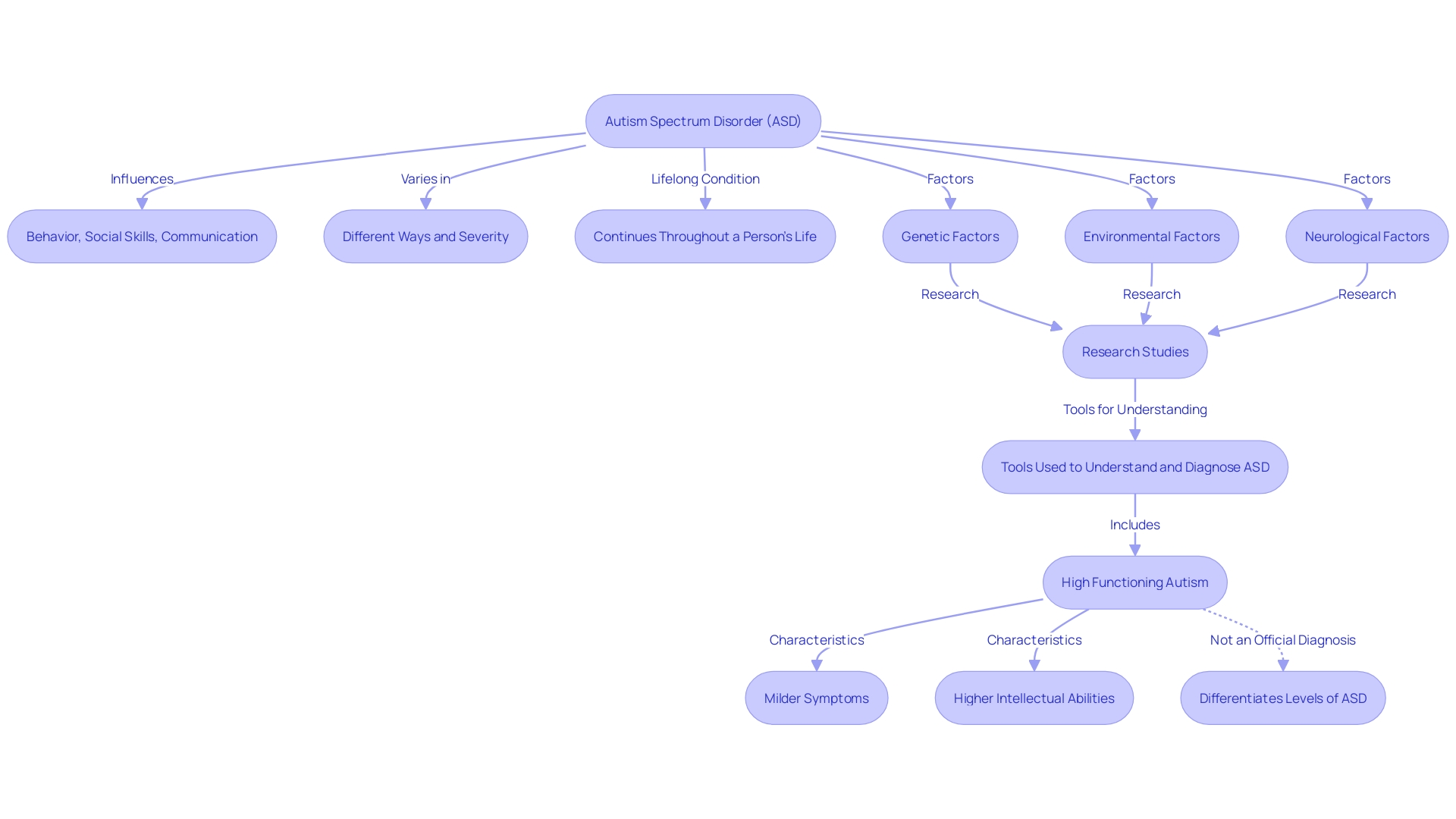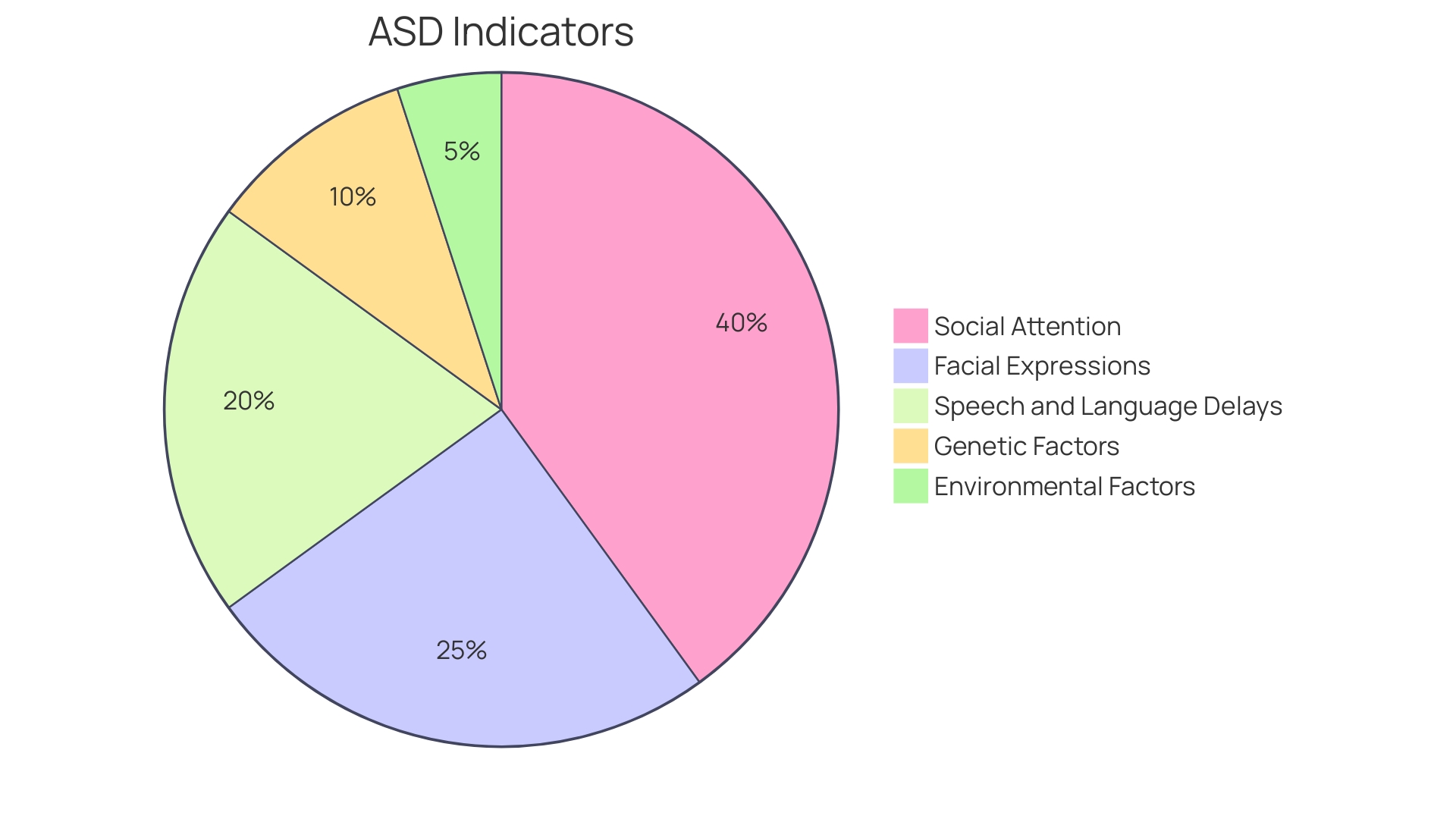Introduction
Understanding the nuances of autism spectrum disorders (ASD) is essential to recognizing the early signs and providing the necessary support for children and their families. ASD encompasses a range of conditions characterized by challenges with social skills, repetitive behaviors, speech, and nonverbal communication. There is no single cause for autism, but it is linked to variations in brain structure or function.
Brain imaging has revealed differences in shape and structure between autistic individuals and those with typical development. While genetics and environmental factors are being explored, it's crucial to dismiss myths, such as the false notion that vaccines cause autism. In this article, we will explore key developmental milestones, factors influencing autism development, early signs and detection, and the variability in developmental delays in autism spectrum disorder.
By gaining a deeper understanding of these topics, Parent Advocates can navigate the challenges and ensure the well-being of their children with confidence and support.
Key Developmental Milestones
Comprehending the subtleties of disorders within the spectrum (ASD) is crucial to identifying the early signs and offering the required support for children and their families. ASD encompasses a range of conditions characterized by challenges with social skills, repetitive behaviors, speech, and nonverbal communication. There is no single cause for this condition, but it is linked to variations in brain structure or function. Brain imaging has revealed differences in shape and structure between autistic individuals and those with typical development. While genetics and environmental factors are being investigated, it's important to dispel misconceptions, such as the false belief that vaccines lead to developmental disorders.
Monitoring a young individual's development compared to key milestones is crucial in detecting early signs of a developmental disorder. These milestones, which cover areas like social interaction, communication, and behavior, can signal whether a child is developing as expected or may need further evaluation. However, diagnosing a developmental disorder can be complex since there are no medical tests for it. Instead, clinicians depend on criteria outlined in the DSM-5, which necessitate the core features of the condition to be present from early childhood. Symptoms may not become fully apparent until social demands exceed a young person's capacities, or they might be obscured by coping strategies and support systems.
Recent progress in technology and research has resulted in the creation of machine-learning models that can forecast developmental disorders in young individuals using restricted data. For instance, the AutMedAI model, which was trained on a substantial dataset, effectively recognized autism in about 80% of instances using 28 parameters available prior to a person reaches 24 months.
Supporting individuals with ASD involves a combination of strategies tailored to their developmental needs. Participating in basic activities like conversing, reading, and singing can greatly improve an individual's early cognitive and vocabulary abilities. Communication aids like Makaton or the Picture Exchange Communication System can also facilitate understanding for those with communication challenges. It's important for caregivers to allow extra time for their child to process information and to seek professional advice from speech and language therapists if developmental delays are observed. These efforts, along with supported decision-making, respect the autonomy of individuals with ASD by empowering them to participate in decisions about their care and life whenever possible.
Factors Influencing Autism Development
Autism Spectrum Disorder (ASD) is a multifaceted neurological condition, marked by a spectrum of symptoms and differences in brain structure and function. Brain imaging studies reveal differences in the shape and structure of the brain in individuals with a certain condition when compared to neurotypical individuals. While the exact causes of autism remain elusive, research suggests a combination of genetic, environmental, and neurological elements are at play. For instance, research such as CHARGE and Recharge explore how a combination of genetic and environmental factors can affect development from childhood through adolescence. These investigations utilize tools like the Child Opportunity Index, which measures various neighborhood characteristics, including socio-economic status, availability of green spaces, and presence of education centers, to assess their impact on child health development.
Diagnosis of the condition does not rely on medical tests but on behavioral observations and developmental history, aligning with the criteria outlined in the DSM-5. Clinicians search for key characteristics of a developmental disorder that are evident from a young age, although they may not become completely noticeable until social demands surpass an individual's ability to cope. Misunderstandings regarding the origins of the condition, like incorrect associations with vaccinations, parenting approaches, or diet, have been disproven through thorough investigation. Instead, patterns observed in families suggest a genetic component to the disorder.
The comprehension of the development of ASD is crucial, as it shapes the support provided to individuals with ASD and their families. Ethical research, approved by organizations such as the Danish Data Protection Agency, guarantees that studies into the causes and impacts of developmental disorder are conducted responsibly, respecting patient confidentiality and without the need for informed consent in the case of register-based studies. As understanding expands, so do the resources and strategies to support the growth of children with autism spectrum disorder, equipping families and professionals with the means to promote their well-being.

Early Signs and Detection
Early recognition of ASD is crucial for initiating effective interventions. Identifying indicators in the initial stages allows both parents and healthcare professionals to seek necessary evaluations. Innovations such as the Sense to know app, developed by Duke professors Geraldine Dawson and Guillermo Sapiro, leverage AI to record and analyze behavioral responses to stimuli, which are indicative of a neurodevelopmental disorder. This tablet-based tool tracks social attention, facial expressions, and other responses, providing a quantifiable analysis that aids in timely detection.
Recent research utilizing machine-learning models demonstrates the power of technology in diagnosing ASD. Kristiina Tammimies and colleagues developed 'AutMedAI', a predictive model that accurately identified approximately 80% of children with autism by analyzing a set of 28 parameters obtainable without extensive assessments. Furthermore, these advancements highlight the significance of intervention in the initial stages and the impact of both genetic and environmental factors on the development of ASD.
Statistics from the US Preventive Services Task Force (USPSTF) emphasize that timely diagnosis not only promotes better health outcomes but also addresses broader health inequities. Speech and language delays, often associated with ASD, can lead to learning and literacy disabilities, emphasizing the need for early detection and support. Moreover, guaranteeing fair access to resources for individuals with disabilities is crucial for promoting mental health and well-being, aligning with the societal objective of offering an equal opportunity for all individuals.

Variability in Developmental Delays
Autism Spectrum Disorder (ASD) is characterized by a diverse array of developmental delays and challenges, which vary greatly from one individual to another. This variability necessitates a personalized approach to interventions and support. For instance, while some individuals may excel in certain areas, they may face significant hurdles in others. Recognizing these unique patterns is essential for tailoring support effectively.
Statistics from the American Psychiatric Association's Diagnostic and Statistical Manual indicate that diagnosing ASD involves a careful analysis of both the caregiver's insights and a professional's evaluation of the individual's behavior. This highlights the significance of personalized attention in comprehending each individual's specific requirements and capabilities.
Furthermore, according to recent research findings, only 10-20 percent of children diagnosed with ASD before the age of 5 can lead an independent life in adulthood. This highlights the critical nature of early diagnosis and intervention to optimize outcomes for individuals with ASD. The development of ASD is influenced by a complex interplay of genetic and environmental factors, which researchers like Naviaux are actively investigating to understand the real-time dynamics of ASD onset.
The need for individualized care is further echoed by specialists who advocate for innovative, integrated health solutions that cater to the diverse needs of local populations. These solutions may include a blend of advanced practice providers, pediatricians with specialized training, and mental health workers, all operating within a patient's medical home.
In the context of medical care, the use of comprehensive visit notes has been identified as a tool for documenting the unique care plans and necessary follow-ups for each patient. As reported by Summer Health, more than half of a medical care provider's time can be consumed by administrative tasks such as writing these notes, which can detract from patient care and lead to provider burnout.
In conclusion, understanding and addressing the individualized needs of those with ASD is pivotal. It involves a collaborative effort from parents, healthcare providers, and specialists, all working together to provide the most effective support and care.
Conclusion
In conclusion, understanding autism spectrum disorders (ASD) is essential for Parent Advocates. ASD includes challenges with social skills, repetitive behaviors, speech, and nonverbal communication, linked to brain structure or function variations. Dismissing myths like vaccines causing autism is crucial.
Tracking developmental milestones helps identify early signs of autism. Diagnosis relies on DSM-5 criteria. Machine-learning models aid in early detection.
Supporting children with ASD involves tailored strategies and seeking professional advice.
The development of autism involves genetic, environmental, and neurological factors. Ethical research provides resources and strategies for well-being. Timely identification of ASD is crucial for effective interventions.
Early diagnosis addresses health inequities and supports learning and literacy.
Autism Spectrum Disorder encompasses diverse developmental delays, requiring a personalized approach. Recognizing unique patterns is crucial for effective support. Individualized attention and understanding specific needs are key.
In conclusion, understanding and addressing the individualized needs of individuals with ASD is crucial. Collaborative efforts from parents, healthcare providers, and specialists provide effective support and care. By gaining a deeper understanding of key aspects, Parent Advocates can navigate challenges and ensure their children's well-being with confidence and support.




